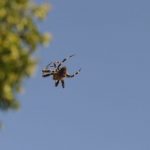 Weird Stuff
Weird Stuff  Weird Stuff
Weird Stuff  Our World
Our World 10 Ways Your Christmas Tree Is More Lit Than You Think
 Movies and TV
Movies and TV The 10 Coolest Stars to Set Sail on The Love Boat
 History
History 10 Things You Didn’t Know About the American National Anthem
 Technology
Technology Top 10 Everyday Tech Buzzwords That Hide a Darker Past
 Humans
Humans 10 Everyday Human Behaviors That Are Actually Survival Instincts
 Animals
Animals 10 Animals That Humiliated and Harmed Historical Leaders
 History
History 10 Most Influential Protests in Modern History
 Creepy
Creepy 10 More Representations of Death from Myth, Legend, and Folktale
 Technology
Technology 10 Scientific Breakthroughs of 2025 That’ll Change Everything
 Weird Stuff
Weird Stuff Ten Bizarre Facts About The Doge Meme
 Our World
Our World 10 Ways Your Christmas Tree Is More Lit Than You Think
 Movies and TV
Movies and TV The 10 Coolest Stars to Set Sail on The Love Boat
Who's Behind Listverse?

Jamie Frater
Head Editor
Jamie founded Listverse due to an insatiable desire to share fascinating, obscure, and bizarre facts. He has been a guest speaker on numerous national radio and television stations and is a five time published author.
More About Us History
History 10 Things You Didn’t Know About the American National Anthem
 Technology
Technology Top 10 Everyday Tech Buzzwords That Hide a Darker Past
 Humans
Humans 10 Everyday Human Behaviors That Are Actually Survival Instincts
 Animals
Animals 10 Animals That Humiliated and Harmed Historical Leaders
 History
History 10 Most Influential Protests in Modern History
 Creepy
Creepy 10 More Representations of Death from Myth, Legend, and Folktale
 Technology
Technology 10 Scientific Breakthroughs of 2025 That’ll Change Everything
10 Rare & Interesting Versions of Common Animals
The animal kingdom is never short on variety, with over 1.5 million living animal species in existence today. And yet, our interests tend to focus on a common few—the black bear, the ring-tailed lemur, the gray wolf. But for every common species, there is an equally uncommon and interesting variation that hardly anyone pays attention to—the Siamese crocodile, the four-eyed antelope, the spirit bear.
None of these animals have ever been anywhere near as abundant as their better-known counterparts, and already slim numbers alongside human activity, predators, environmental change, and other factors are making them rarer by the day. But while you probably don’t yet know they exist, you’ll be all the better for it when you do.
Related: Top 10 Tiny Creatures Capable Of Killing You
10 Hirola Antelope
If you’ve ever seen a nature documentary, chances are you’ve seen an antelope—with distinctive stick-thin legs and pronged horns, most often being hunted by a lion, leopard, or cheetah. Indigenous to Africa, India, the Middle East, and Central Asia and kept in many zoos worldwide, it’s not difficult to track one down.
Chances are, however, you’ve never seen the hirola antelope. The name hirola comes from the Somali “arawla,” which refers to the color of the animal’s coat. It’s also known as the “four-eyed antelope” thanks to its dark sub-orbital glands. The hirola has a long, mournful face, tan hide, and great black spiraled horns and is almost exclusively found along the Kenya-Somali border.
Unfortunately, a viral rinderpest epidemic in the 1980s wiped out 85-90% of the hirola population, and it is now a critically endangered species. There are now fewer than 500 hirolas in the entire world. With ongoing human and bush encroachment on this unique antelope’s grassland territory, the impact on its numbers could soon usher in extinction.[1]
9 Roach’s Mouse-Tailed Dormouse
Small, fuzzy, and adorable—dormice are nocturnal rodents found across Africa, Asia, and Europe, typically in woodland habitats. They hibernate through the winter, spending around three-quarters of their lifetime in a sleep state. Thanks to this and their inherent skittishness, they are looked upon considerably more fondly than common pest rodents such as rats.
While all species of dormice have been in decline for years, especially in the UK, where roads and industrial changes in farming have impacted their numbers, there is one super rare variation that is harder to spot than most.
The Roach’s mouse-tailed dormouse is only found in west Turkey and southeast Bulgaria and prefers open landscapes, living in the hedgerows and copses around cereal and sunflower fields. Unlike other dormouse species, which have thicker, furry tails, the Roach’s has the slimmer, hairless tail of a common mouse. While never a prolific species, the last few decades have been tough for the Roach’s, with most of its habitat converted to intensive agriculture. And because so little is known about its daily and seasonal activity patterns, diet, and other potential threats, researchers are struggling to ensure the survival of the species.[2]
8 Siamese Crocodile
Dating back to the Early Triassic period (250 million years ago), crocodiles are the largest reptiles on the planet and the source of nightmares for small children and grown adults alike. Their teeth, scales, and size make them one of the closest living relatives to dinosaurs, and their fearsome reputation is well-earned throughout their lowland tropic habitats in both hemispheres.
But while it isn’t hard to spot a croc if you know where to look, there’s one variation of this familiar animal that isn’t so easy to find. The rare Siamese crocodile inhabits freshwater streams, lakes, and swamps in pockets of Southeast Asia. With olive-green scales, a light underside, and flattened nostrils, it sports a uniquely soft, coppery hide that is prized by hunters.
The fact that the species is smaller and less aggressive than its abundant saltwater crocodile cousin means it has been hunted to numbers between just 500 and 1,000 wild individuals. Nonetheless, the recent hatching of 60 Siamese crocodiles—the largest population born this century—is a positive sign that conservation efforts in Cambodia are working to rescue them from the brink.[3]
7 Javan Rhinoceros
Rhinoceros are a staple of zoos and safari parks around the world, inspiring visitors with the juxtaposition of their size (6.6-13 feet or 2-4 meters long; 4.5-5.5 feet or 1.4-1.7 meters tall), weight (3-5 tons), and their herbivorous diets. Yet, while everyone could draw the average rhino from memory, even the most avid fans of these creatures may not know what a Javan rhino looks like.
The Javan’s distinctive traits include its dusky gray coloring, its singular 10-inch (25 cm) horn (compared to other species’ 20-55 inches. 50-140 cm), and its small head. The most threatened of the five rhinoceros species and one of the rarest mammals on Earth, only around 76 of the Javan rhinos are left.
Until the early 20th century, the Javan grazed throughout northeastern India, Southeast Asia, and the island of Sumatra. However, after being hunted for sport, exterminated as agricultural pests, and killed for its horn (a commodity in traditional medicine), the Javan now lives in only one area of the world—the coastal Ujung Kulon National Park in Indonesia. The threats of poaching, inbreeding, and natural disasters like tsunamis mean this rare creature may soon be a thing of the past.[4]
6 Finless Porpoise
Often mistaken for dolphins, porpoises are smaller than their cetacean cousins, with spade-shaped teeth. But, despite their comparative lack of popularity among animal fans, porpoises are abundant. They can be spotted around the coasts of Europe, North America, and Northern Africa.
What you won’t see is the Yangtze finless porpoise, one of the very variations of the animal that lives in freshwater, diverging from its marine relatives between 5,000 and 40,000 years ago. Known for its mischievous smile and near-human intelligence (roughly that of a gorilla), the Yangtze is one of only three types of finless porpoise in existence.
The Yangtze takes its name from the longest river in Asia, which used to be one of the only two rivers globally that was home to this finless porpoise and the Baiji dolphin. Until overfishing drove the Baiji to extinction in 2006. Since then, industrialization, shipping traffic, and overfishing have threatened to take the Yangtze as well, with numbers dwindling to around 1,000. However, the suspension of sand mining in 2017 has seen the porpoise return to areas it had been driven out of, and early data suggests cautious optimism for the species’ survival.[5]
5 Silky Sifaka Lemur
Anyone who has seen DreamWorks’ Madagascar will be au fait with ring-tailed lemurs, the most recognizable and intensely studied lemurs on the planet and the most common primates in human care. But there are plenty of other types of lemur out there if you know where to look.
One of the rarest lemurs on the planet is the silky sifaka, whose fur tends to be white, whereas its ring-tailed relatives are grey and black, with black skin that loses pigmentation as it grows. Due to the disruption of human activity, including poaching and farming, its habitat is restricted to a mountainous range in the tropical rainforests of northeastern Madagascar, with most of its population residing within Marojejy National Park.
There are only around 250 silky sifaka alive today, making it one of the 100 most endangered species in the world. And this minuscule population isn’t helped by the fact that females are only fertile 1-2 days of the entire year, making it all too easy to miss their opportunity for reproduction.[6]
4 Spoon-Billed Sandpiper
Common sandpipers are a familiar sight to coastal residents across the northern hemisphere, where they tend to breed, and in the southern hemisphere, where they tend to migrate for winter. These small birds are notable for how they bob (known as “teetering”) and the three-note call they give as they take flight. They number around three million individuals globally.
But breeding in far northeastern Russia, there is another, highly uncommon version of this humble bird: the spoon-billed sandpiper. The spoon-bill’s spatulate beak (which resembles a webbed foot) makes it unique among not just sandpipers but also shorebirds. It uses this to poke through sand, mud, and wetland areas in search of insects to feed on.
Remarkably resourceful, the spoon-billed fledgling leaves the nest within a day of hatching and feeds itself; however, for every 20 eggs laid in the wild, only three chicks survive to adulthood. This means that fewer than 800 of these birds are left worldwide. Nevertheless, specialist organizations like the WWT hand-rear chicks, increasing the number of spoon-bills that survive year-on-year by up to 20%.[7]
3 Red Wolf
Except for humans and lions, gray wolves once enjoyed the largest distribution of any land mammal on Earth, ranging throughout North America, Europe, and northern Asia, living in all habitats, excluding tropical forests and arid deserts. Despite the animal’s dwindling population over centuries, being hunted for food and to protect agriculture and their domestication and selective breeding that produced dogs, there are still between 200,000 and 250,000 wolves worldwide.
These numbers could only be dreamed of by the red wolf—a relative of the gray, with golden eyes, a rusty brown coat, and an overall smaller stature, somewhere between the size of a gray and a coyote. Once a common sight throughout East and Central U.S.A., the red wolf’s population was decimated by predator control programs and extreme alteration of the species’ habitat through farming and industrialization.
Nowadays, the red wolf numbers just 241 individuals in captive breeding facilities across America, but the most eagle-eyed spotters can see 15 to 17 of these animals out roaming North Carolina—the only confirmed wild red wolves in existence.[8]
2 Spirit Bear
When most of us think of a bear, we picture brown or black, the two most common bears in the world. But while we might see both in the Great Bear Rainforest on the northwest coast of British Columbia, a unique variant of the black bear lives here—a far rarer and more special sight.
Also known as the white, ghost, or kermode bear, the spirit bear is found deep and almost exclusively in the northern part of the Great Bear Rainforest. It is named for its white coat, which is the product of a unique recessive gene. Living a solitary life, this bear eats fruit, berries, nuts, roots, and the wild salmon that descend upon the rivers and creeks of the rainforest each year to spawn. The spirit is actually better than the black bear at catching fish during daylight, using its light coat as a camouflage against the bright sky.
Due to the spirit bear’s reclusively, rarity, and remote habitat, nobody knows exactly how many of them there are. Still, the best estimate available is a population of around 400 individuals.[9]
1 De Winton’s Golden Mole
Layman mole categorization typically falls into two camps—the cute ones (European) and the hideous ones (Star-Nosed). However, there are more varieties of the modest mole out there than you might realize, some which have almost disappeared altogether, and some which have come back from presumed extinction.
De Winton’s golden mole, named after British zoologist William Edward de Winton, is one such specimen. Unlike your regular dirt-dwelling mole, the De Winton’s makes its home in the sand dunes on the west coast of South Africa and takes its golden name from the secretions that lubricate its fur an iridescent color, helping it move more easily when burrowing under the sand. Blind from birth, this mole relies on its sensitive hearing and under-foot vibrations to detect predators and prey.
But we rarely get to see one in pictures or in film. The species was last spotted in the 1930s and was declared lost for over 80 years. In November 2023, a team of conservationists and geneticists tracked its environmental DNA through the dunes and unearthed the De Winton’s with a bit of help from a border collie named Jessie.[10]








